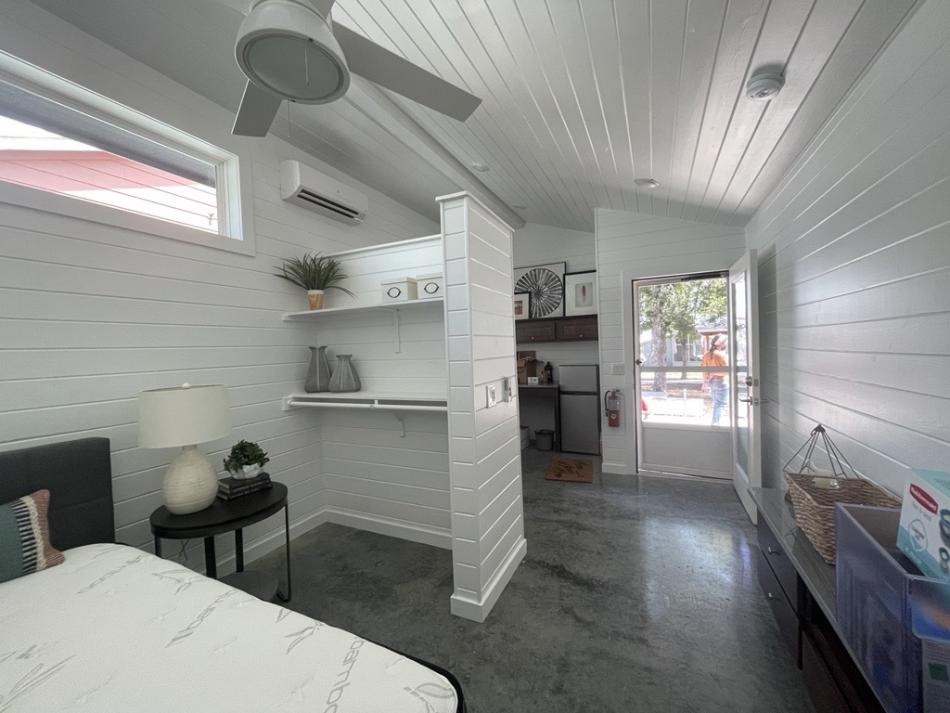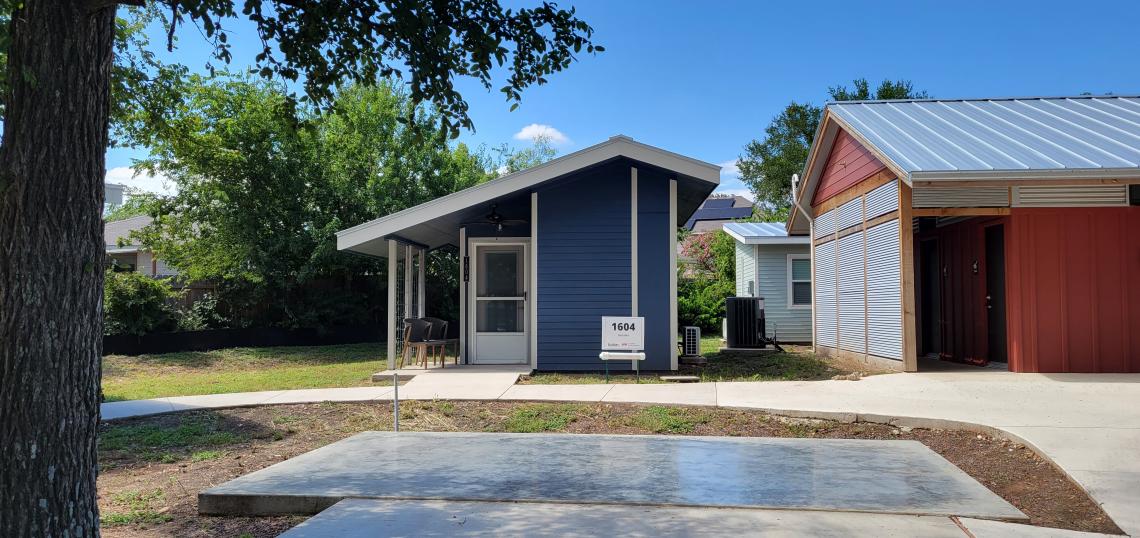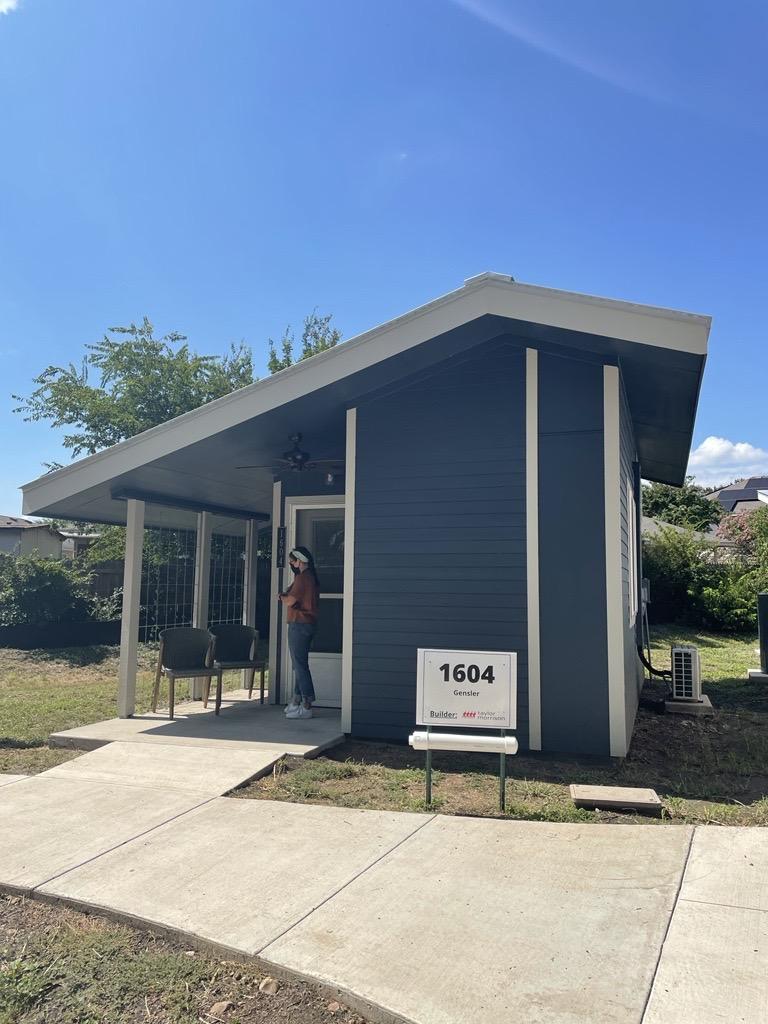It's no secret that local conversations around homelessness and affordable housing have reached an especially hectic pitch in recent years—nor that practical, timely solutions sometimes seem as far away as ever. Community First Village, on the other hand, has for years been a steady beacon and example of one effective way to create and maintain permanent, supportive housing on an ongoing basis.
Founded and run by local nonprofit Mobile Loaves and Fishes, the master-planned community of tiny homes and community facilities is located just east of Austin city limits at 9301 Hog Eye Road. It began expanding from its original 27 acres into its second phase in 2018 and continued to make use of innovations in housing, adding six 3D-printed tiny homes as part of its second phase in 2020.
Through the Tiny Victories design competition, Community First has partnered with Gensler to meet more of the housing requirements of people who have disabilities to create eight new small homes designed for those needs. Located directly adjacent to the community’s amenities to ensure barrier-free routes between them, the homes feature a mix of areas that help provide privacy as well as space for hosting guests.
According to Gensler project co-leader Ksenia Nation, the prototype house layout was designed in accordance with Texas Accessibility Standards, making it easy to navigate for people with various disabilities and health issues. The barrier-free home also allows easy access to electrical outlets, light switches, and the thermostat and includes built-in storage and appliances as well as ample space for movement in both the sleeping/private area and kitchenette.
The 180-square-foot, wood-frame homes have standing-seam metal roofs and painted lap siding that provides opportunities for creative expression and personalization. After learning that many Community First Village residents are artists and craftspeople, said Nation, designers added two exterior "mural strips" that each resident can design and paint to their liking. Interiors have painted tongue-and-groove siding, and each home has a shaded porch with a charging area for electric wheelchairs and a planting trellis for a personal garden.
 Gensler's tiny home prototype at Community First Village was designed in accordance with Texas Accessibility Standards.Gensler
Gensler's tiny home prototype at Community First Village was designed in accordance with Texas Accessibility Standards.Gensler
"Gensler has been collaborating with Community First Village for years," said Nation. "Carrie Waller and Jessica Rollason, also with Gensler, helped conduct a post-occupancy evaluation of the very first tiny homes with DesignVoice, a group from AIA Austin that facilitates opportunities for design professionals to serve their community through collaborative design. The data and insights gleaned from the evaluation helped the community grow and continuously improve. For Phase II of the village, Gensler’s summer interns developed schematic design drawings that became the starting point for the Gensler tiny homes, which are accessible for residents with disabilities." Nation and architect Ana Kurzan used those drawings to create construction documents that could serve as a replicable set for eight prototype homes.







